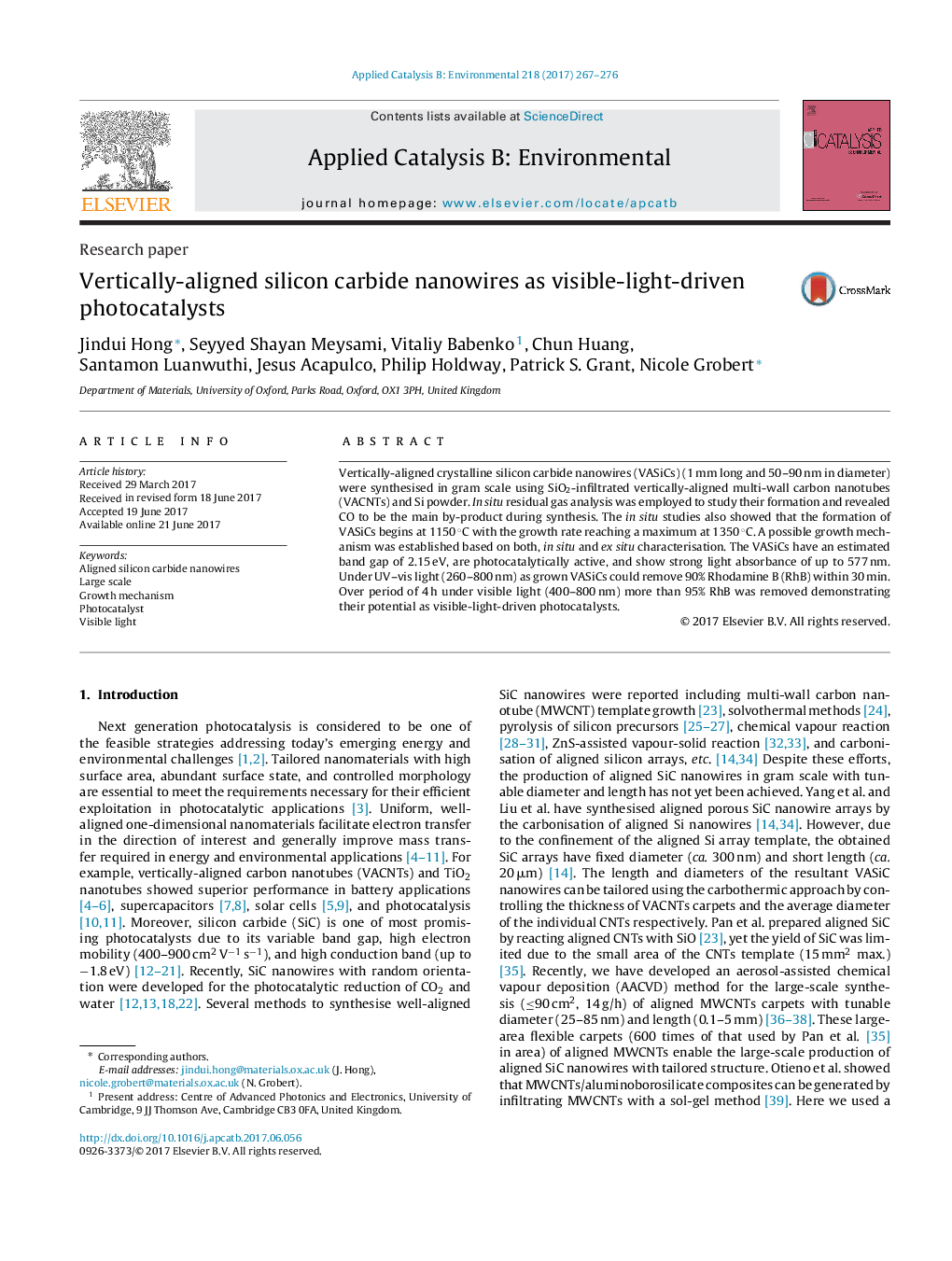| Article ID | Journal | Published Year | Pages | File Type |
|---|---|---|---|---|
| 6453736 | Applied Catalysis B: Environmental | 2017 | 10 Pages |
â¢We developed a sol-gel and carbothermal method to prepare aligned SiC nanowires.â¢These SiC nanowires were produced in gram scale with tunable diameter and length.â¢Growth mechanism was studied using in situ mass spectrometry for the first time.â¢Photocatalytic dye degradation under UV-vis and visible light was demonstrated.
Vertically-aligned crystalline silicon carbide nanowires (VASiCs) (1 mm long and 50-90 nm in diameter) were synthesised in gram scale using SiO2-infiltrated vertically-aligned multi-wall carbon nanotubes (VACNTs) and Si powder. In situ residual gas analysis was employed to study their formation and revealed CO to be the main by-product during synthesis. The in situ studies also showed that the formation of VASiCs begins at 1150 °C with the growth rate reaching a maximum at 1350 °C. A possible growth mechanism was established based on both, in situ and ex situ characterisation. The VASiCs have an estimated band gap of 2.15 eV, are photocatalytically active, and show strong light absorbance of up to 577 nm. Under UV-vis light (260-800 nm) as grown VASiCs could remove 90% Rhodamine B (RhB) within 30 min. Over period of 4 h under visible light (400-800 nm) more than 95% RhB was removed demonstrating their potential as visible-light-driven photocatalysts.
Graphical abstractVertically-aligned SiC nanowires with tunable length and diameter were produced in gram scale which showed efficient photocatalytic activity towards dye degradation under visible light.Download high-res image (222KB)Download full-size image
